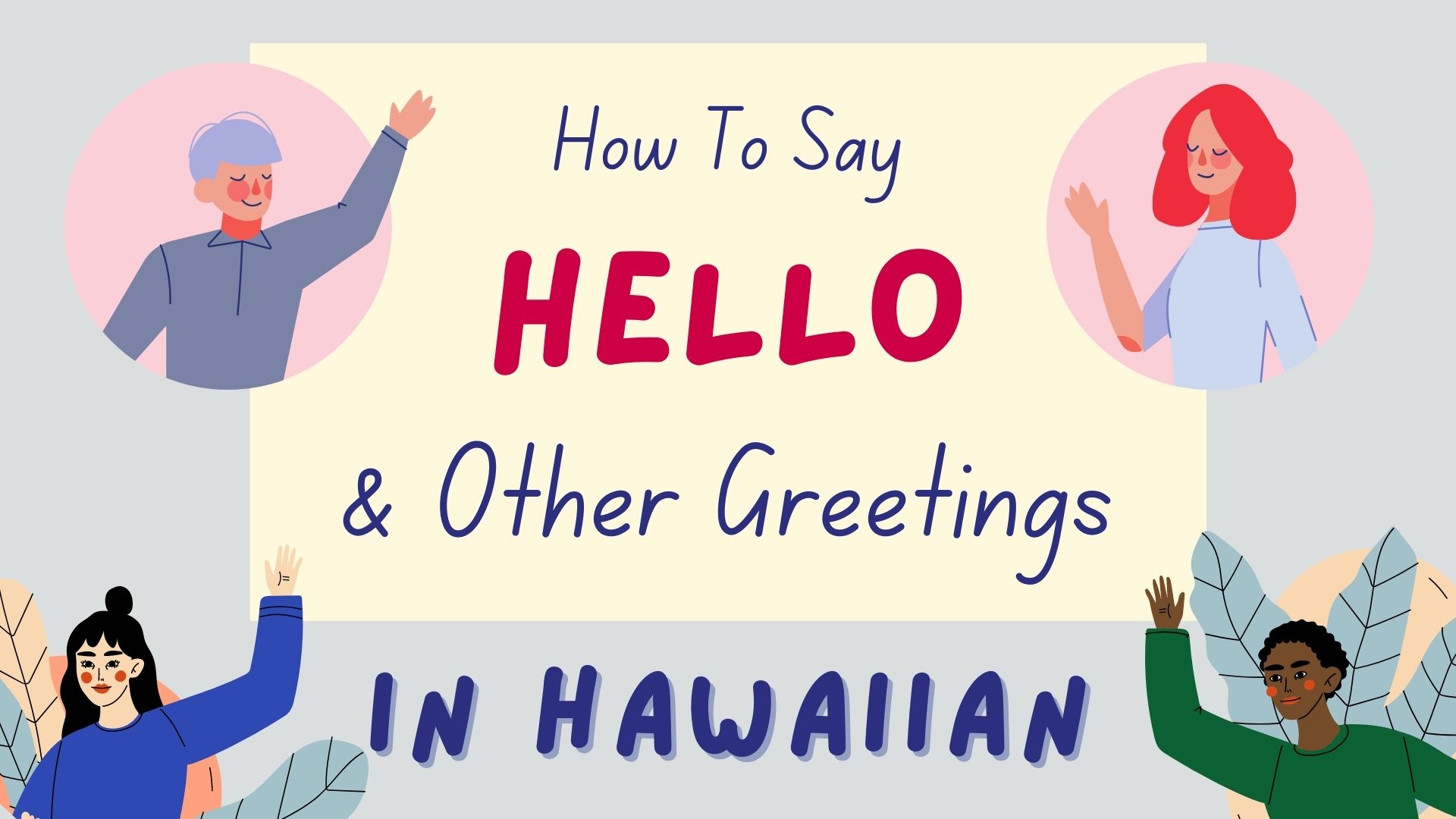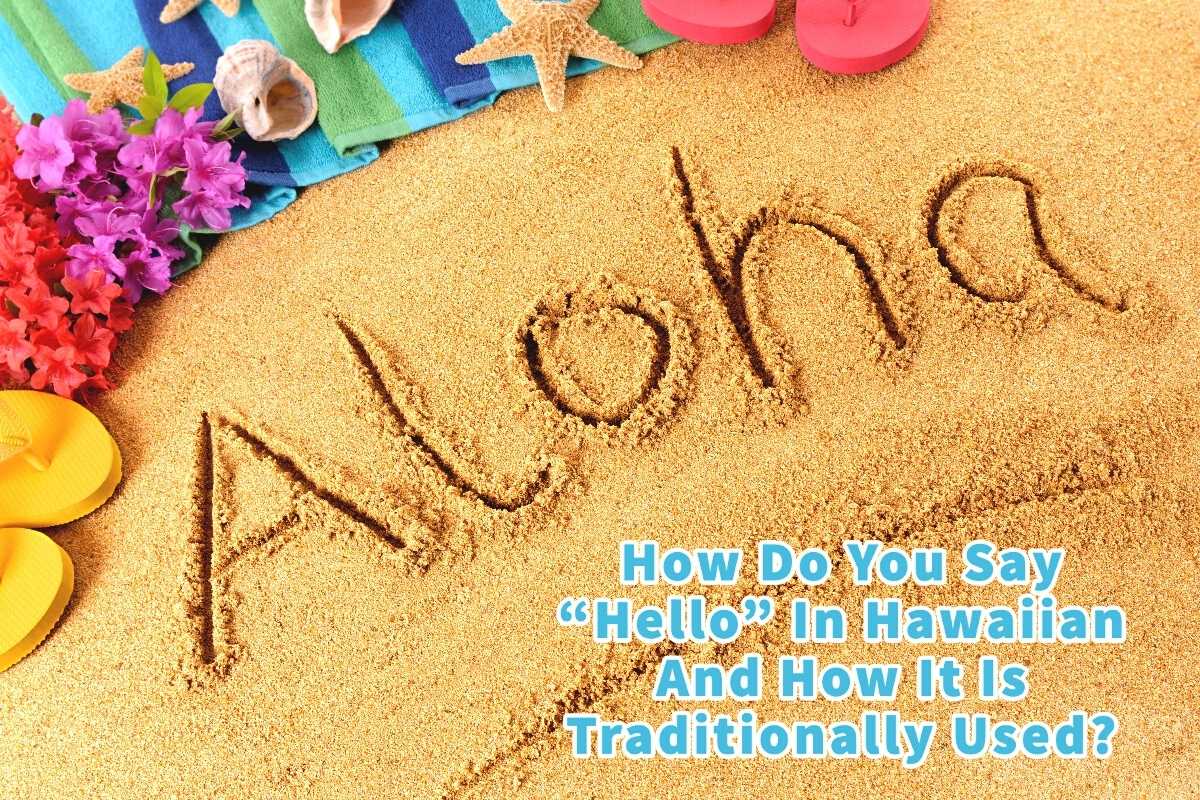Hello in hawaiian language – Aloha! Beginning with hello in Hawaiian, this guide will delve into the captivating realm of Hawaiian language and culture, exploring the nuances of this warm and welcoming greeting.
From its cultural significance to its variations and usage, this comprehensive guide will illuminate the rich tapestry of Hawaiian greetings, providing insights into the vibrant heart of this Polynesian paradise.
Definition and Meaning

The Hawaiian word for “hello” is “aloha”. It is a versatile word that can be used in a variety of contexts, and its meaning can vary depending on the tone of voice and the context in which it is used.
In general, “aloha” is a friendly greeting that is used to welcome someone or to say goodbye. It can also be used to express love, affection, or compassion. When spoken with a warm and genuine tone, “aloha” can convey a sense of warmth and belonging.
Cultural Significance
“Aloha” is more than just a word; it is a core value in Hawaiian culture. It represents the spirit of hospitality, kindness, and compassion that is central to the Hawaiian way of life. “Aloha” is not just a greeting; it is a way of being in the world.
When Hawaiians greet each other with “aloha,” they are not just saying hello; they are also acknowledging the divine spark within each other. They are recognizing the shared humanity that connects all people and the importance of treating each other with respect and kindness.
Variations and Dialects: Hello In Hawaiian Language
The Hawaiian language, like many other languages around the world, exhibits regional variations known as dialects. These dialects have emerged due to geographical isolation and historical factors, leading to distinct pronunciations, vocabulary, and grammatical structures.
In the case of the Hawaiian language, there are two primary dialects: the Standard Hawaiian dialect and the Pidgin Hawaiian dialect.
Standard Hawaiian Dialect
The Standard Hawaiian dialect is the official and standardized form of the Hawaiian language. It is used in formal settings, such as schools, government, and the media. The Standard Hawaiian dialect is based on the dialect spoken on the island of O’ahu.
Pidgin Hawaiian Dialect
The Pidgin Hawaiian dialect is a simplified form of the Hawaiian language that developed during the 19th century as a means of communication between native Hawaiians and non-native speakers, such as missionaries, traders, and plantation workers. Pidgin Hawaiian is characterized by a reduced vocabulary, simplified grammar, and the incorporation of words from other languages, such as English, Chinese, and Portuguese.
Formal and Informal Usage

The Hawaiian language has both formal and informal ways of saying “hello.” The formal way is “Aloha kakahiaka”(good morning), “Aloha awakea”(good afternoon), and “Aloha ahiahi”(good evening). These greetings are typically used in professional settings or when speaking to someone you do not know well.
The informal way of saying “hello” is “Aloha”. This greeting can be used in any setting, regardless of the formality of the situation. It is the most common way to greet someone in Hawaiian.
Appropriate Contexts, Hello in hawaiian language
The following are some examples of appropriate contexts for using each variation of “hello”:
- Formal:When meeting someone for the first time, in a professional setting, or when speaking to someone you do not know well.
- Informal:When greeting friends, family, or acquaintances, in a casual setting, or when speaking to someone you know well.
Cultural Context and Etiquette
Greetings in Hawaiian culture hold great significance and are deeply rooted in the concept of “aloha.” This spirit of love, compassion, and respect permeates all aspects of Hawaiian social interactions, including the way people greet each other.
Eye contact is highly valued in Hawaiian culture. When greeting someone, it is considered polite to maintain direct eye contact to demonstrate sincerity and respect. Body language also plays a crucial role in conveying emotions and intentions. A warm smile, open arms, and a gentle touch can all enhance the warmth and friendliness of a greeting.
Nonverbal Cues
Nonverbal cues are an integral part of Hawaiian greetings. Some common nonverbal cues include:
- The “shaka” sign:This gesture, made by extending the thumb and pinky finger while curling the other fingers, is a friendly greeting or expression of gratitude.
- The “aloha” sign:This gesture, made by forming a “V” shape with the thumb and index finger, is a common way to express love, respect, and compassion.
- The “hang loose” sign:This gesture, made by extending the thumb and pinky finger while keeping the other fingers curled, conveys a relaxed and carefree attitude.
Historical Evolution
The Hawaiian language has undergone significant changes throughout history, influenced by various factors such as colonization, globalization, and cultural exchange. The evolution of Hawaiian greetings, including “hello,” reflects these changes.
Originally, Hawaiians had a complex system of greetings that varied depending on the time of day, social status, and relationship between individuals. The most common traditional greeting was “aloha,” which conveyed not only “hello” but also love, compassion, and well-being.
Other greetings included “e komo mai” (welcome) and “oli aloha” (song of love).
Arrival of Missionaries
In the early 19th century, the arrival of Christian missionaries introduced English to Hawaii. Missionaries established schools and began translating the Bible into Hawaiian, which led to the adoption of English words and phrases into the Hawaiian language. The English word “hello” was one of these adopted words, and it gradually became more common in everyday usage.
20th Century and Beyond
During the 20th century, Hawaii experienced increased tourism and globalization. The influx of visitors from around the world brought new languages and cultures to the islands, further influencing the Hawaiian language. The use of “hello” became even more widespread, especially in tourist areas and in interactions with non-native speakers.
Preservation and Revitalization
In recent decades, there has been a growing movement to preserve and revitalize the Hawaiian language. This movement has led to a renewed interest in traditional Hawaiian greetings, including “aloha.” Today, “aloha” is considered the most appropriate and respectful way to greet someone in Hawaii, regardless of their cultural background or language proficiency.
Comparative Analysis
The Hawaiian word for “hello,” aloha, is shared among various Polynesian languages, reflecting the cultural and linguistic connections within the Polynesian region. While the term aloha holds a profound cultural significance in Hawaiian culture, its usage and meaning may vary across other Polynesian languages.
Similarities in Usage
- Greeting and Farewell:Aloha is commonly used as a greeting upon meeting someone and as a farewell when parting ways, conveying both a sense of welcome and well-being.
- Expression of Affection:In many Polynesian cultures, including Hawaiian, aloha is used to express love, affection, and a deep connection between individuals or groups.
- Symbol of Hospitality:Aloha represents the Polynesian value of hospitality and welcoming strangers, creating a sense of warmth and inclusivity.
Differences in Meaning and Cultural Significance
- Spiritual and Religious Connotations:In Hawaiian culture, aloha carries spiritual and religious significance, embodying the concept of divine love, harmony, and compassion. This aspect may not be as prominent in other Polynesian languages.
- Variation in Pronunciation:While the word aloha is shared across Polynesian languages, its pronunciation can vary slightly, reflecting regional differences and language variations.
- Specific Cultural Practices:The use of aloha may be associated with specific cultural practices or rituals in certain Polynesian cultures, which may not be shared across all Polynesian languages.
Modern Usage and Influences
In contemporary Hawaiian society, “aloha” continues to be the ubiquitous greeting, serving as both a salutation and a farewell. It is deeply ingrained in Hawaiian culture, reflecting the values of warmth, hospitality, and mutual respect.
External influences have also shaped the usage of “aloha.” The arrival of Western missionaries in the 19th century introduced the English word “hello,” which was initially used alongside “aloha.” Over time, “hello” gained wider acceptance, particularly in formal settings and interactions with non-native speakers.
Variations in Modern Usage
In modern Hawaiian usage, “aloha” and “hello” are often used interchangeably, depending on the context and audience. “Aloha” remains the preferred greeting in informal settings, among family and friends, and when addressing elders or those in positions of respect. “Hello” is more common in formal settings, such as business meetings, official events, and interactions with strangers.
Impact of Tourism and Globalization
The rise of tourism in Hawaii has also influenced the usage of “aloha.” The greeting has become a symbol of Hawaiian hospitality and is often used by tourism professionals and businesses to welcome visitors. This has further cemented “aloha” as a global symbol of Hawaiian culture.
Cultural Preservation and Language Revitalization
In recent years, there has been a growing movement to preserve and revitalize the Hawaiian language. As part of this effort, there has been a renewed emphasis on using “aloha” as the primary greeting in all settings. This is seen as a way to strengthen the Hawaiian identity and pass on cultural traditions to future generations.
Final Conclusion

As we bid farewell, may the spirit of aloha continue to guide our interactions, fostering understanding and connection across cultures. The Hawaiian language, with its enchanting greetings, offers a timeless reminder of the power of human connection.
FAQ Compilation
How do you say “hello” in Hawaiian?
The most common way to say “hello” in Hawaiian is “aloha.”
What is the cultural significance of the Hawaiian greeting?
Aloha is more than just a greeting; it embodies the spirit of love, compassion, and respect that is central to Hawaiian culture.
Are there different variations of “hello” in Hawaiian?
Yes, there are several variations of “hello” in Hawaiian, including “aloha kakahiaka” (good morning), “aloha awakea” (good afternoon), and “aloha ahiahi” (good evening).